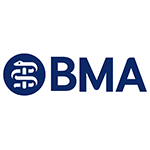Understanding Trigger Digit
What is Trigger Digit?
Trigger digit, or “triggering” of the finger or thumb, is a common condition where tendons moving from the palm to the fingertips face resistance when gliding through a tight fibrous tunnel. This restriction can lead to a catching or “triggering” sensation, especially when trying to straighten the affected finger.
Causes of Trigger Digit
The exact cause of trigger finger is often unknown, but it has been linked to conditions such as diabetes, arthritis, and thyroid disease. In some cases, it may be linked to repetitive use of the affected finger, although this is not a confirmed cause. The problem occurs as the tendon passes through a series of tunnels, or pulleys, in the finger. When thickening occurs at the tunnel’s entrance, it causes the tendon’s surface to become rough, leading to inflammation that narrows the tunnel space, resulting in the tendon catching.
Symptoms of Trigger Digit
In the early stages, trigger finger may cause a clicking or popping sensation in the palm, with the finger straightening out suddenly with a flick. As it progresses, the finger may lock in a bent position and require help from the other hand to straighten. This can be painful and often makes an audible click. Trigger finger can affect one or multiple fingers, but it is most common in the thumb, middle, and ring fingers.
Diagnosing Trigger Digit
Typically, a diagnosis can be made based on a clinical examination alone, and further tests are rarely necessary.
Natural Course of Trigger Digit
In many cases, trigger finger improves on its own without treatment. Since it is generally harmless, treatment is only recommended if symptoms become bothersome. Symptom resolution without treatment can take up to 18 months, although not all cases resolve spontaneously.
Treatment Options
Non-Surgical Treatments:
- Splints: Wearing a splint, especially at night, can help reduce pain and improve finger movement.
- Activity Modification: Changing how you perform certain activities can help reduce symptoms.
- Hand Therapy: Exercises designed to improve tendon gliding and reduce inflammation, along with gentle massage, can be beneficial.
- Steroid Injections: Steroid injections can relieve pain and improve symptoms in about 70-90% of cases. A second injection may sometimes be necessary. The success rate may be lower in patients with diabetes. Risks, including infection, tendon damage, and a pain reaction, are rare, occurring in roughly 1 in 2,000 patients.
Surgical Treatment:
Surgery is a last-resort option. It involves opening the tunnel (pulley) that the tendon glides through to create more space for movement, relieving the catching sensation. While surgery is generally safe, potential complications include infection, nerve injury, and scar tenderness, although recurrence is uncommon.





















